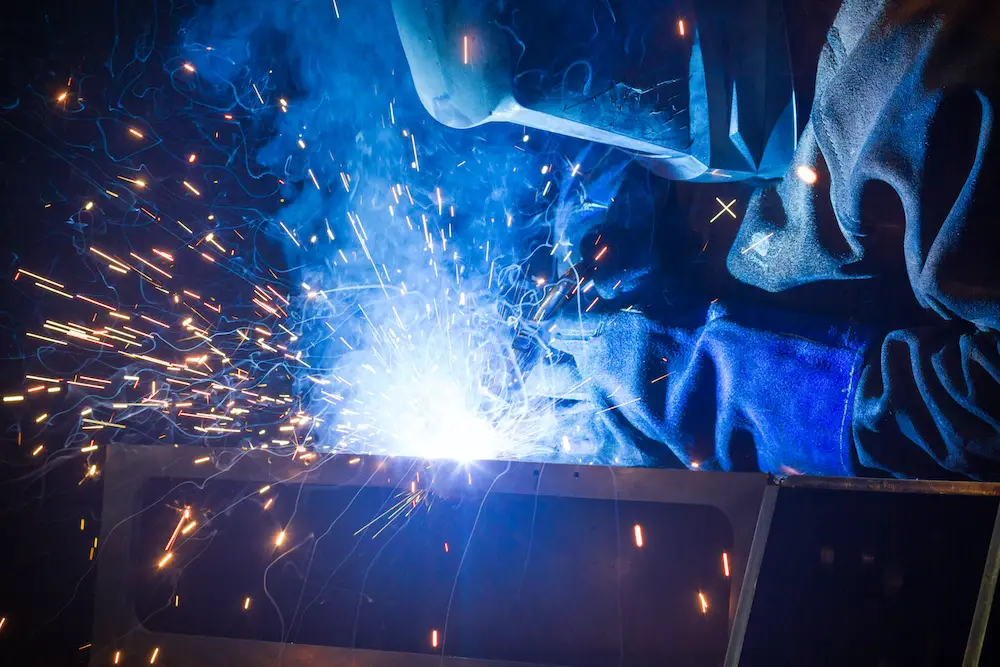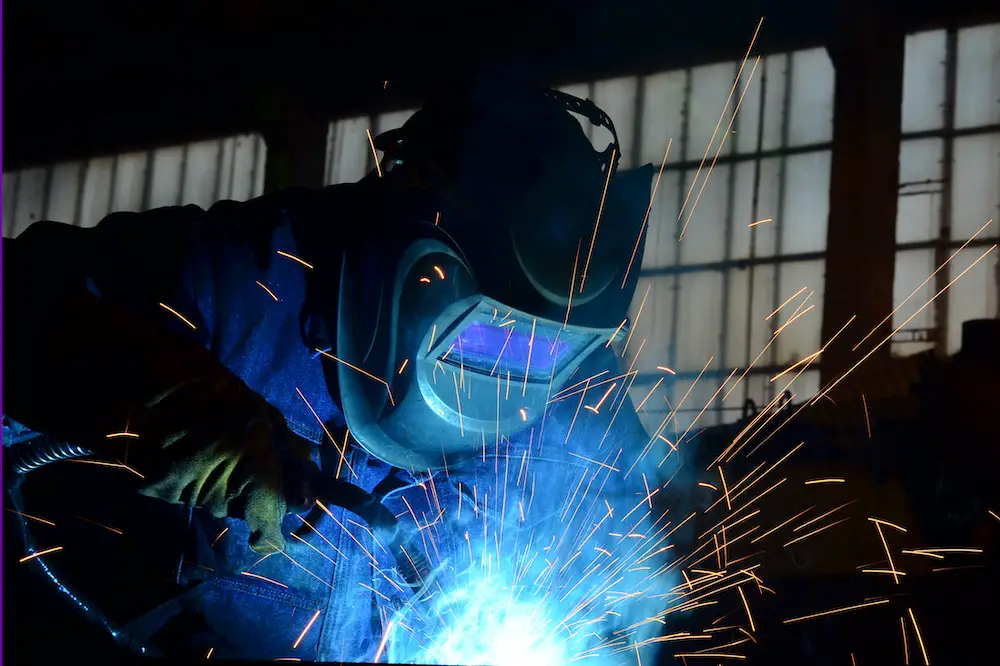While the underlining purpose of any kind of welding is to join two pieces of metal by heating them up to their melting points, the actual process can be a little bit more complicated than that.
Like any craft, welding also comes with its fair share of specialties, including arc, laser, resistance, and electron.
However, these are just the parent bodies. Each essentially includes multiple family members that make up the crux of welding.
For instance, a common type of arc welding is known as MIG welding.
As a newbie to this world, the first thing that comes to mind is this: what does MIG welder stand for?
To know what does MIG mean in welding, this guide will help answer all your queries.
What Does MIG Welder Stand For?
So, what does MIG mean in welding?
MIG welding stands for Metal Inert Gas (MIG), sometimes also referred to as Gas Metal Arc Welding (GMAW).
It is the most common form of arc welding and is often the most sought-after craft by novice welders.
However, MIG welding itself consists of two different forms of welding: bare wire and flux-core.
As the name suggests, bare wire MIG welding is done in more controlled environments where atmospheric pressures are considered stable.
Welders can use this form of welding to join two distinct pieces of metal.
On the other hand, flux-core MIG welding accounts for variance in atmospheric pressures and works without a stable gas supply or flow meter.
Different Features of a MIG Welder
To fully understand what does MIG stand for, it is important to know how it works.
Here are some of the main features of a MIG welder:
Control Switch
The control switch is the trigger responsible for the wire feed and the flow of the electricity.
The wire feed is directly guided by the contact tip and will vary according to the size of the tip.
Contact Tip
Usually made from high-quality chemically treated copper material, the contact tip ensures there is reduced spatter from the welder.
In turn, this ensures a clean and controlled process without the user coming into direct contact with molten metal.
This feature is directly connected to the power source. It is responsible for guiding the electrical energy that will be transmitted to the electrode.
Gas Nozzle

The gas nozzle is made of either metal or ceramic and is found right outside of the tip.
It helps protect the electrode and guide the shielding gas contained within the gas tank, often found outside the welder.
The nozzle is responsible for evenly distributing the shielding gas across the welding region.
The size of the gas nozzle determines the shielding effect. Essentially, this means that the larger the nozzle, the better the shielding effect.
As a protective measure, some welders often have a water hose that helps cool down the unit, especially after high-current operations.
Electrode Conduit With Power
The electrode conduit contains the electrode wire that helps avoid any interruptions in the wire feed.
Again, the wire feed is essentially the connection between live electricity and the welder, following through to the contact tip.
Shielding Gas
The shielding gas helps protect against hazards by preventing the molten metal from reacting to oxygen or any other elements present in the surrounding.
Other than that, it plays an integral role in forming the arc plasma and ensures that it stabilizes against the intended surface.
The type of gas found in the welder is determined by several factors:
- The intended depth of the weld
- The type of metal being welded (For instance, to weld steel, carbon dioxide is often used.)
- The type of welding arc required
The most commonly used shielding gases in welders include carbon dioxide, oxygen, and argon.
Some welders may also use a combination of gases depending on the metal being welded.
For example, for non-ferrous metals, a combination of argon and helium is used.
When To Use a MIG Welder
When considering what does MIG welder stand for, a most commonly occurring question regarding their application often crops up.
For starters, it’s essential to understand the metals that are best suited for MIG welding.
While MIG welders are known to work well with almost all metals, the quality of the weld will vary for each.
The most common metals welded by MIG welders include aluminum, carbon steel, and stainless steel.
In terms of application, MIG welders can be found occupying home sheds, automotive industries, garages, and even the plumbing or piping industries.
Their relatively easy application makes MIG welding as a craft easy to learn and apply in a number of settings.
Are MIG Welders Worth It?
As with any tool, it’s not enough that you know what does MIG stand for; you should also determine whether or not it’s even worth it.
For that, here are the pros and cons of having a MIG welder in your arsenal.
Advantages of Using a MIG Welder
A MIG welder can create high-quality welds at a much faster pace and a considerably affordable price.
Here are some advantages of investing in a MIG welder:
- Versatile application
- Cost-effective welding
- Lower heat input
- Can work with different metals of varying thicknesses
- Continuous wire feed reduces overall downtime
- Zero electrode stub loss
- Most models support both 120V and 240V input.
- Spatter control reduces overall weld cleaning
Limitations of Using a MIG Welder
Despite all the advantages of getting a MIG welder, there are some limitations associated with its utility, such as:
- MIG welding requires a stable atmosphere.
- MIG welders are more costly compared to other welders, like stick.
- Shielding gas can be costly to replace.
- Limited welding positions due to high heat input
What Does MIG Welder Stand For: Final Thoguhts
In conclusion, the best way to explain what MIG welding stands for is by understanding its widespread usage.
From home garages to industrial-grade workshops, MIG welders have taken over the welding world.
These are not only user-friendly and safe to use but also cost-effective and time-efficient.
Most professional welders comment on how easy these are to learn and can easily be taught in under 20 minutes.
With online tutorials and user manuals found in every MIG welder packaging, users often start welding right away.
If you want to know more about MIG welding do’s and don’ts, you can check out the video below:

